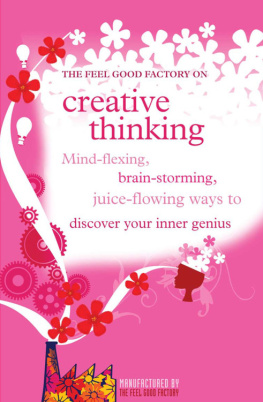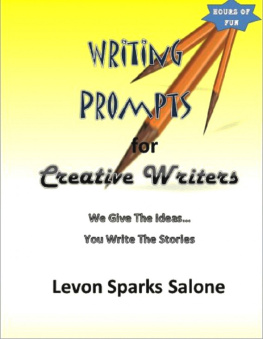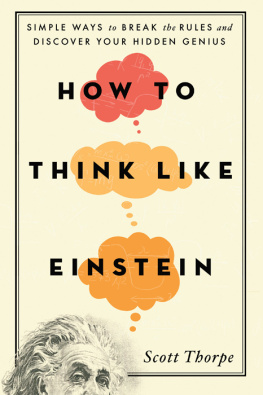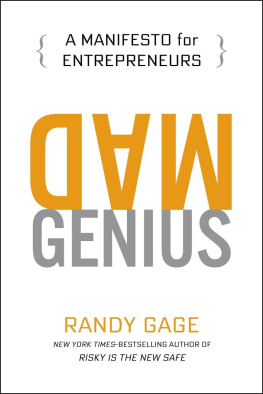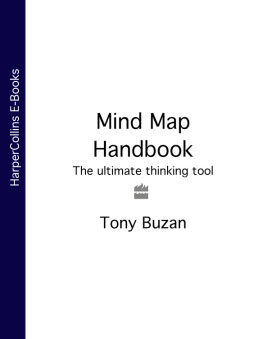
Table of Contents
Copyright 1999 by Robert and Michle Root-Bernstein
All rights reserved
For information about permission to reproduce selections from this book, write to Permissions, Houghton Mifflin Company, 215 Park Avenue South, New York, New York 10003.
www.hmhbooks.com
The Library of Congress has cataloged the print edition as follows:
Root-Bernstein, Robert Scott.
Sparks of genius : the thirteen thinking tools of the worlds most creative people / Robert and Michle Root-Bernstein.
p. cm.
Includes bibliographical references and index.
ISBN 0-395-90771-3
1. Creative thinking. I. Root-Bernstein, Michle. II. Title.
BF 408 R 66 2000
153.3'5dc21 99-048005
e ISBN 978-0-547-52589-1
v1.0813
Burning the Small Dead, by Gary Snyder, from The Back Country, copyright 1968 by Gary Snyder. Reprinted by permission of New Directions Publishing Corp. 1(a, copyright 1958, 1986, 1991 by the Trustees for the E. E. Cummings Trust, from Complete Poems: 19041962 by E. E. Cummings. Edited by George J. Firmage. Reprinted by permission of Liverlight Publishing Corporation. Last stanza of Two Tramps in Mud Time from The Poetry of Robert Frost, edited by Edward Connery Lathem. Copyright 1936 by Robert Frost. 1964 by Lesley Frost Ballantine, 1969 by Henry Holt and Company, LLC. Reprinted by permission of Henry Holt and Company, LLC.
Acknowledgments
O VER THE LAST TWENTY YEARS many people have encouraged, influenced, and supported our exploration of the imagination and its tools for thinking. We thank all of them, and particularly Robert Gray, the late Raffi Amram, Tom Rodriguez, Diane Newman, and Steve Fraser. During the more recent writing of this book, we have been greatly helped by many persons staffing museums, libraries, associations, and publishing houses, especially Janet Hicks of the Artists Rights Society in New York. Many individuals have been generous with their materials, among them Bill Cambry, Patrick Dillon, Gerd Fischer, Nat Friedman, Steve Heidemann, Benoir Mandelbrojt, Ron Meyer, Desmond Morris, Claes Oldenburg, Roger Penrose, Vernon Reynolds, Helen Samuels, Doris Schattschneider, Todd Siler, and Ken Snelson. Among the many colleagues with whom we have discussed tools for thinking, the arts in education, and arts-sciences interactions, we wish to mention Sharon Friedler, Julian Gresser, Paul Heltne, Scott Shanklin-Peterson, and Mark Slavkin. A number of people kindly read and commented on the manuscript. Thank you, Mort and Maurine Bernstein, Alan Brody, Stephen Edelglass, Linda Caruso Haviland, Richard Kaplan, Eric Oddleifson, and Todd Siler. We appreciate your time and effort.
Finally, we gratefully acknowledge close friends and family members who havent minded our shoptalk too much. And especially we thank our teenagers for putting up with preoccupied parents, late meals, and a continuous gloss on dinner conversation. Empathizing, wed say in response to homework assignments, good books, or piano practice. Pattern forming, body thinking, imaging. Meredith and Brian simply rolled their eyes, good-natured to the end.
Preface
T HIS BOOK IS ABOUT creative thinking. Creative thinking in all fields occurs preverbally, before logic or linguistics comes into play, manifesting itself through emotions, intuitions, images, and bodily feelings. The resulting ideas can be translated into one or more formal systems of communication, such as words, equations, pictures, music, or dance only after they are sufficiently developed in their prelogical forms. Regardless of the infinitely diverse details of the products of this translation (paintings, poems, theories, formulas, and so on), the process by which it is achieved is universal. Learning to think creatively in one discipline therefore opens the door to understanding creative thinking in all disciplines. Educating this universal creative imagination is the key to producing lifelong learners capable of shaping the innovations of tomorrow.
Because our approach to creative thinking is integrative and transdisciplinary, we have had to unravel certain strands of disciplinary knowledge in order to posit a new fabric of unified understanding. A new synthesis is necessary, not only in order to understand thinking itself, but for pedagogical and social reasons as well. Ever-increasing specialization is clearly leading to a fragmentation of knowledge. People today have so much information and so little grasp of its origins, meanings, and uses that overall comprehension has frayed beyond repair. Even as specialized knowledge increases, communication between fields decreases. Within fields experts address larger and larger problems in smaller and smaller bits. Modern society faces a dark age in the midst of intellectual plenty, a paradox that can be resolved only by reintegrating knowledge in new ways and by training a new generation of Renaissance people to weave new syntheses for themselves.
Such an intellectual enterprise requires both cognitive and educational foundations. Our project therefore has both warp and woof. We must comprehend the nature of creative thinking (the warp) if we are to devise an educational system capable of training creative thinkers (the woof). In the opening chapters we prepare the loom, discussing, first, current misunderstandings about the nature of creative thinking, then the barriers our current educational system raises to creative thinking.
We weave the fabric of the book from the experiences of the centurys greatest minds, who explain how they think about thinking and how they learned how to think. People in every creative endeavor use a common set of general-purpose thinking tools in an almost infinite variety of ways. These tools reveal the nature of creative thinking itself; they make surprising connections among the sciences, arts, humanities, and technologies. At the level of creative imagination, everyone thinks alike.
By restructuring our cognitive categories to emphasize the unity of creative thinking, we formulate a new conception of knowledge and, correspondingly, a new form of education. In the concluding chapters of the book, which deal with the ways in which ideas are transformed and synthesized during the creative process, we demonstrate how the warp and woof yield an integral tapestry of understanding. The final chapter suggests concrete ways in which our cognitive restructuring can be implemented through specific educational reforms.
The wonder of the resulting intellectual fabric is that like real fabric, it can be transformed into an almost infinite number of things. Our new material is not, therefore, an end in itself, but the stuff from which future artists and scientists, humanists and technologists, will fashion their world.
One final note: following the that will help readers to practice and develop the thinking tools we describe in the text. This book is but a beginning.
Invention presupposes imagination but should not be confused with it. For the act of invention implies the necessity of a lucky find and of achieving full realization of this find. What we imagine does not necessarily take on a concrete form and may remain in a state of virtuality, whereas invention is not conceivable apart from its actually being worked out.
Thus, what concerns us here is not imagination in itself, but rather creative imagination: the faculty that helps us pass from the level of conception to the level of realization.
Igor Stravinsky, The Poetics of Music
Rethinking Thinking
E VERYONE THINKS . But not everyone thinks equally well. For real intellectual feasts we depend on master chefs who have learned to mix and blend and savor an entire range of mental ingredients. Its not that what they do in the kitchen is any different from what we do, they just do it better. We like to suppose master chefs were born that way, yet even the most promising individuals spend years in training. It follows that we, too, can learn the tools of the trade and thereby improve our own mental cooking. This process, however, requires us to rethink what gourmet intellection is all about. And rethinking shifts our educational focus from
Next page


